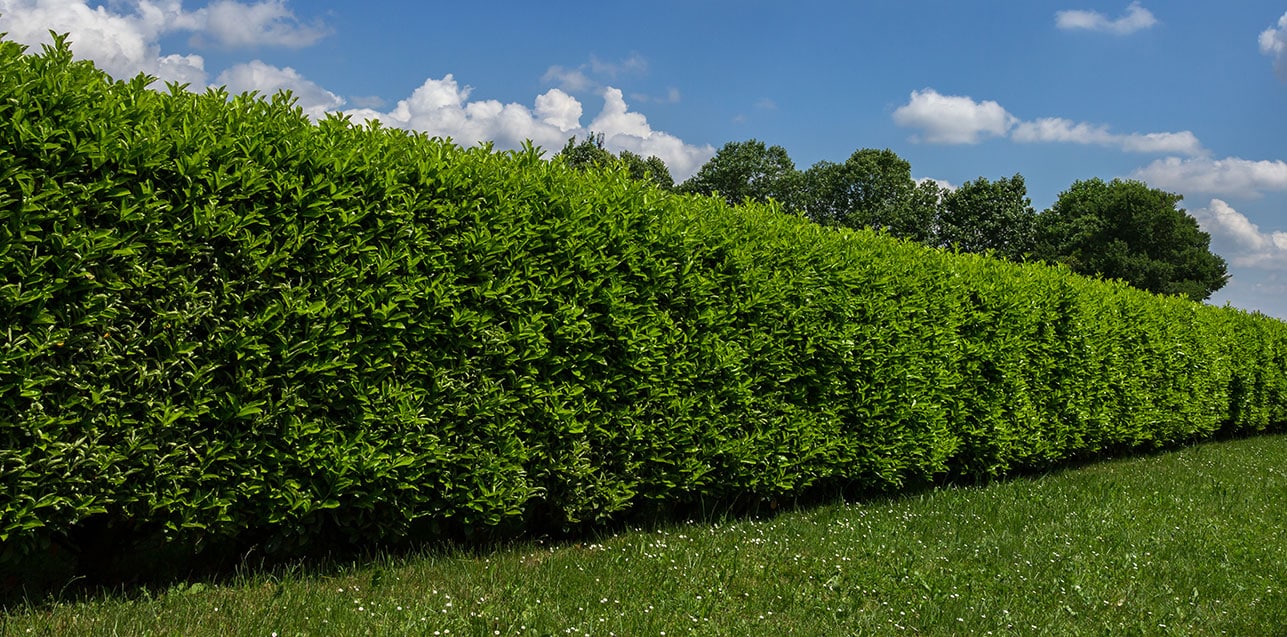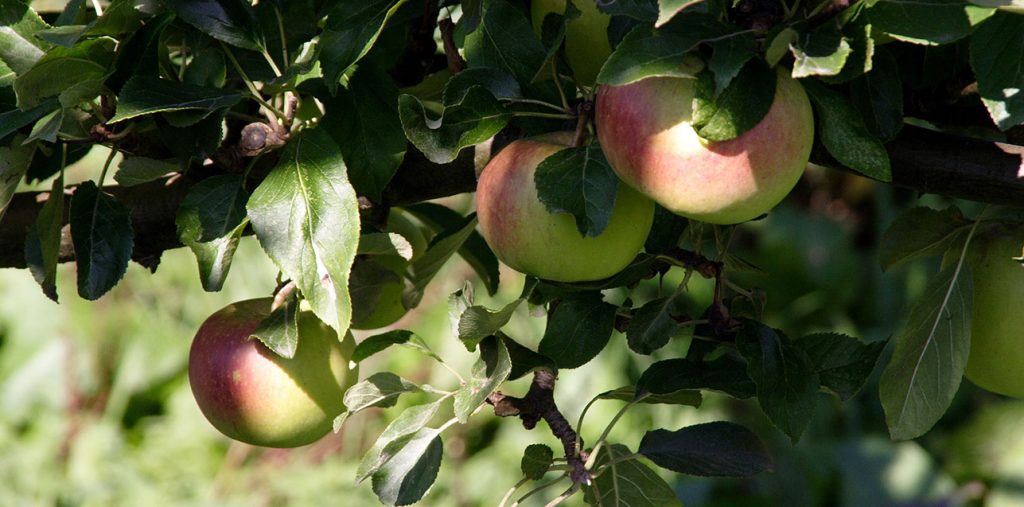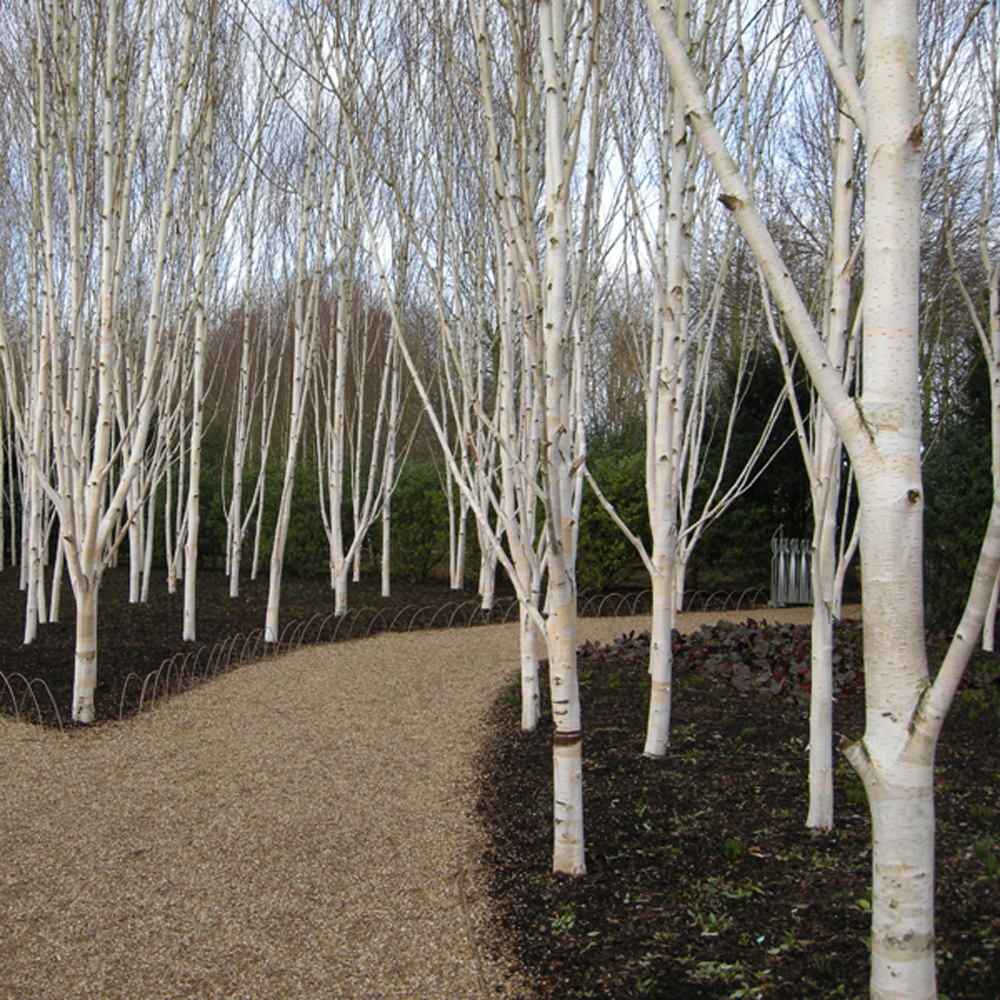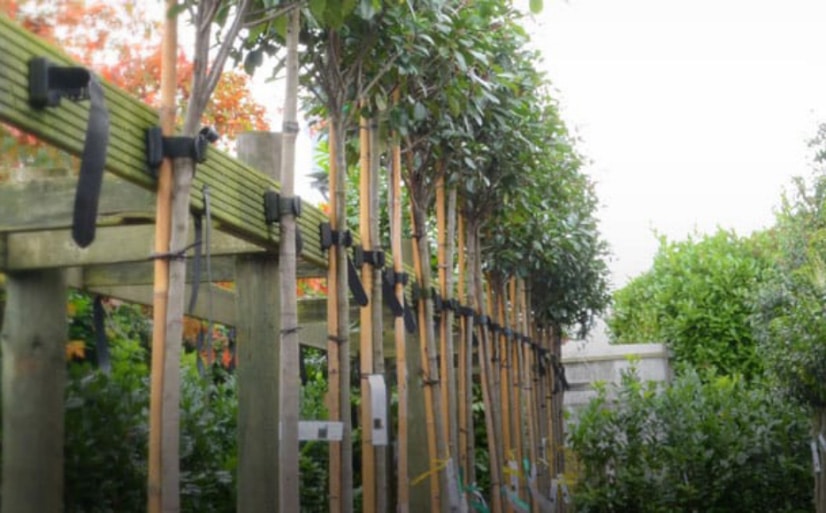The Himalayan Birch is a tall, elegant tree known for its striking white bark. Over time, this bark naturally peels away, revealing fresh white layers and noticeable lenticels underneath. The tree forms a broad, pyramidal crown with upward-reaching branches. This clean, upright canopy is a popular choice for architectural landscaping and looks particularly effective when planted in trios, either in open spaces or along fence lines. They make an excellent focal point, especially in winter gardens.
Often confused with Silver birch, the Himalayan Birch has dark green, ovate leaves and yellow-brown catkins in spring. The leaves turn a vibrant yellow in autumn. This hardy tree is suited to most soil types and tolerates most conditions.
One of the main differences between the Himalayan and Silver Birch is in their bark. Himalayan Birch bark peels in thin, papery sheets and remains bright white, while Silver birch bark develops black, rugged fissures at the base with age. The Himalayan Birch also tends to be slightly shorter at maturity and has a more upright, formal canopy.
Read More:
1. Trees for Natural Summer Screening: Our favourite candidates for privacy and shade!
2. Top 10 Trees for Winter Interest – Part One
3. What trees are best for new build gardens?
4. Top 10 Native Hedging Plants
5. What are the best plants & trees for your soil type?






